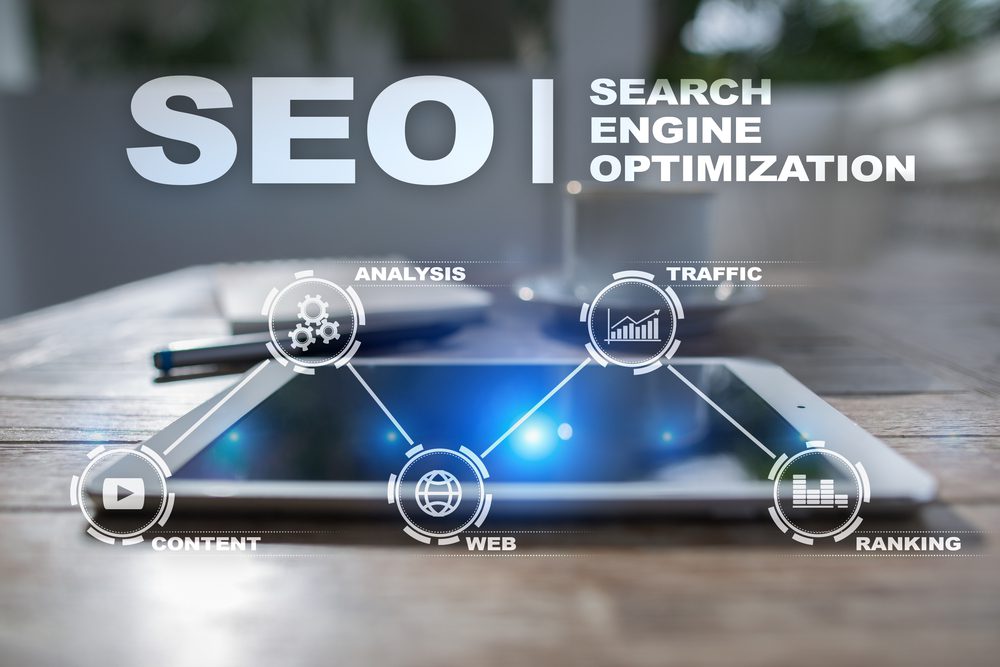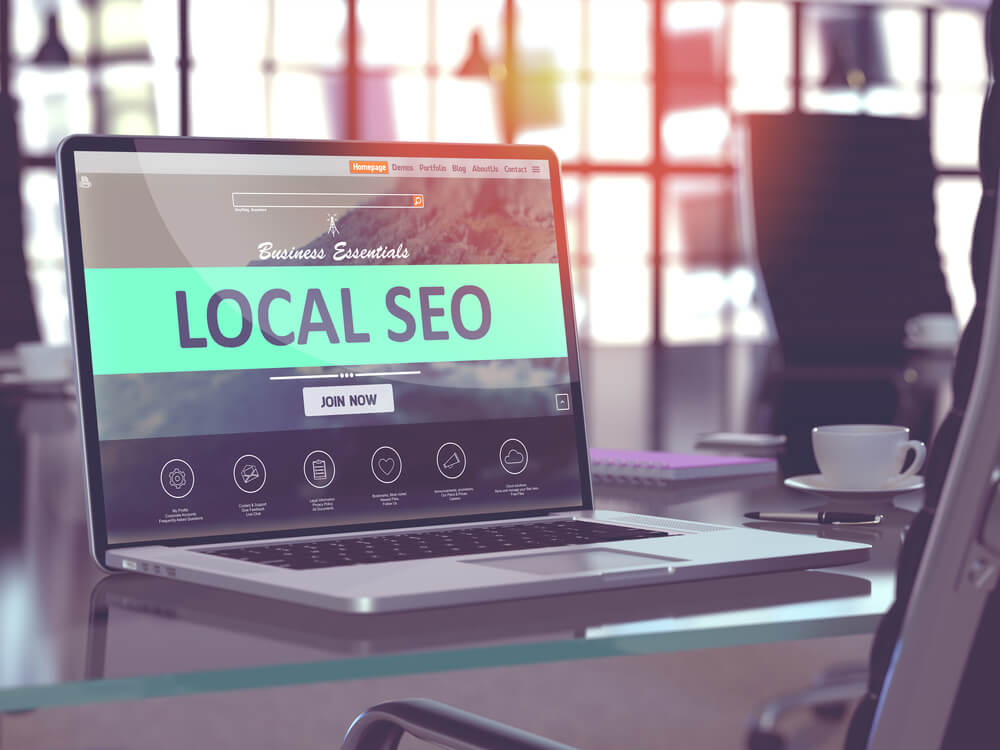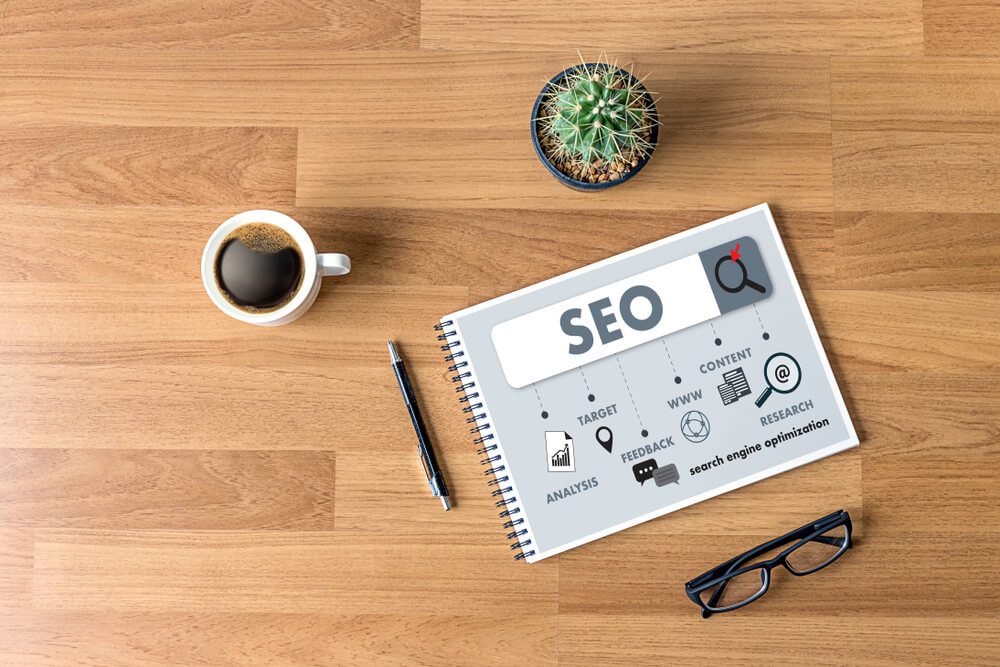
SEO vs Local SEO: Understanding the Difference
Digital marketing experts often talk about “SEO” and “Local SEO” like they are different animals. Agencies may have different service pages for the two disciplines. Is this just an effort to capture more keywords? A sign of SEO agencies performing SEO on themselves?
Yes and no. SEO and local SEO are related, but local SEO has key distinctions that make it worth addressing separately. So what is the difference between SEO vs Local SEO? How do you know if your company needs one, the other, or both?
SEO vs Local SEO: How Are They Different?

Both standard SEO and local SEO use artificial intelligence to deduce the intent of the searcher. And both use keywords to evaluate the desired search content and return the most relevant results.
Local SEO goes a step further, though. In addition to deducing content needs, the AI search algorithm also attempts to deduce local search intent.
What does “local search intent” mean? Suppose you run a pizzeria in Chicago. If someone searches “Best Pizza,” will your pizzeria website come up?
Not necessarily. If the person conducting the search is right down the street from the pizzeria, then maybe. Google uses geotargeting to try and return local search results, but the keywords entered into the search field do not necessarily indicate local intent. The search might return national chains or pizza recipes or the Wikipedia page for “pizza.”
[bctt tweet="Both standard SEO and local SEO use artificial intelligence to deduce the intent of the searcher. And both use keywords to evaluate the desired search content and return the most relevant results." username="digitalpart"]
With those giant fish dominating the pond, it is very hard for a Chicago pizzeria to dominate a search for “best pizza”--and there’s no reason to. What if the person searching “Best Pizza” is located in California or in Singapore?
Suppose that the search contained the keywords “Best Pizza in Chicago.” This search indicates local intent. It would be much easier for the Chicago pizzeria to rank in this search. (Well, marginally easier, considering how competitive the pizza market is in Chicago.)
Another indicator of local intent is the “near me” keyword. If a person in Chicago searches “Best Pizza Near Me,” that triggers Google’s geotargeting function, pulling search results with local relevance. Your pizzeria has a great chance of topping that search—especially if the searcher is within walking distance of the pizzeria’s location.
Remember, the goal of search engines is to return the most relevant results to the search. The search algorithms look for local intent in service of that goal.
What Is SEO and Why Is It Important?
Let’s back up and talk about SEO more generally—what it is and why it’s important.
The goal of SEO is to make sure that likely customers, clients, or consumers find a target website when they enter a relevant search. This means making sure that the website appears in the Page-One, Top-10 results of the search engine results page (SERP). 90% of searches never make it to the page-one SERP.
Of course, paid Google ads can immediately put your site at the top of the SERP, but these paid listings are clearly identified as ads. Studies show that searchers trust the websites returned by Google’s ranking algorithm (known as “organic results”) more than they trust ads.
SEO is the practice of increasing a website’s organic ranking in the estimation of search engines for specific keywords. Which keywords? Businesses, digital marketers, and SEO experts can take their pick, but logic dictates that they expend some effort to determine which keywords might best indicate a warm buyer.
In the previous example—the pizzeria in Chicago—it makes sense to perform SEO for the keywords “Best Pizza in Chicago.” It makes no sense to optimize for the keywords “Best Car Detailing in Seattle.” Someone entering that search term is irrelevant to a pizzeria in Chicago because there’s no way they can fulfill the presumed needs of someone who does that.
Once you know your keywords, how do you increase your ranking for those keywords? To understand how, it’s important to understand how search engines work, at least in the broadest sense.
Search engines keep a list of every public-facing website on the internet and assign each of those pages a certain amount of domain authority. If two sites are about the same topic—say, two pizzerias in Chicago—the site that will rank the highest of the two in any given search will be the site with higher domain authority.
[bctt tweet="Search engines keep a list of every public-facing website on the internet and assign each of those pages a certain amount of domain authority." username="digitalpart"]
Search engines like Google build their index and assign authority by deploying AI programs called “crawlers.” The crawlers prowl the internet, using hyperlinks as highways, to discover new websites. They then crawl the websites, observing the content with their AI machine brains, and use what they see to assign authority.
Crawlers revisit every website in the search engine index periodically. If, on their most recent visit, they discover evidence that the site has increased in authority, they might assign it a higher ranking.
Crawlers also scan the website’s content relevance. If the website mentions “pizza” many times, the crawlers will assume that the site is relevant to searches about pizza. If it mentions “pizza” and “Chicago,” the crawlers will assume the site is relevant for each keyword, and extra relevant for searches with both keywords.
This confluence of authority and relevance determines how high a site ranks organically on a SERP. So how do you use this knowledge to achieve a #1 organic position on a SERP for your target keyword? Several processes can be used to increase a site’s relevance and authority, including:
Technical SEO
Technical SEO consists of outfitting the website at the code level to be appealing to the search engine crawlers. This includes:
- Load-Time Optimization. Crawlers can tell how your site performs. Sites that take more than three seconds to load lose authority.
- Mobile Optimization. Google crawlers use a “mobile-first” protocol. If your site is poorly optimized for mobile, your whole site’s ranking suffers.
- Local Schema. Not the same thing as “local SEO,” local schema is a kind of data markup language that helps the crawlers interpret the content of the site.
- Interlinking. Every page links to other pages within the site in an orderly way, so the crawler can find the whole site index. Keeping an index page with links is another way to accomplish this.
- Page Titles and Meta Descriptions. Titles should be properly nested, meta descriptions, and alt tags optimized.
Keyword Optimization
Keyword optimization is the process of loading your website with the right keywords in places where the crawlers will notice them and assign the site relevance for them. Positions of high relevance include the page title, top headers, meta title, and meta description. Other places to optimize for keywords include the alt text of images, body text, and subtext.
Keyword optimization needs to be done with a light touch. Crawlers can detect “keyword stuffing”—the overuse of keywords in random ways to try and rank for them. Only about 1-3% of the text should be keywords.
Marketing teams should also know the difference between “short head” and “long tail” keywords and optimize for both. A “short head” might be “pizza in Chicago”—specific enough, but still kind of general.
A “long tail” is a longer and more specific keyword—“pizza in Chicago open until midnight that serves vegan gluten-free deep dish.” That’s a long tail! Fewer people will be searching for that keyword … but that makes it easier to rank for. Plus, long-tail keywords are associated with high buyer intent. That gluten-free vegan night owl sounds hungry.
Content Marketing
Content marketing is the practice of answering user questions, usually by tailoring blog entries to those questions. The point of content marketing is to rank sub-pages easily for long-tail keywords. Part of keyword research is revealing what questions your warm market is already searching. By finding your authoritative answers, they make the first contact with your brand so you can start nurturing them as a prospect.
Content marketing also increases the site index and volume of content, which contributes to the overall authority of the domain.
Backlinking
We all know that you navigate the web using “hyperlinks” or just “links.” The classic link is blue, underlined text. When you click it, you go to another site. Links can also be images, including “button” images.
Crawlers follow the links as well. If they notice that many other sites link to a particular target site, the crawler takes this as a sign of authority for the target site—after all, other sites are referencing it or recommending it to their visitors.
Such a link is called a “backlink.” Backlinks, by definition, don’t live on the site you are trying to optimize—they live on other sites, casting a vote for the authority of the target site from afar. A powerful SEO tactic, backlinking involves strategizing to get other sites to link to your site.
What Makes Local SEO Different?
Local SEO is highly relevant to brick-and-mortar businesses and to companies providing a local service. Unless they offer e-commerce or tele-services, it does them no good if a user in a far-away city discovers their site. They need local leads, local customers, local web traffic. The closer, the better.
Another distinction of SEO vs local SEO is that local SEO can be faster to implement. National SEO can take months or even years to bear fruit. Local SEO can start taking effect within weeks.
Searches with “local intent” trigger a different set of responses from the Google algorithm, which result in a different SERP. The two most important functions to be aware of are:
The Map Pack
If you enter a Google search that indicates “local intent” (“... in Chicago,” “... near me,” etc.) you may notice that a “map” appears near the top of the search results. Sometimes it is right at the top; sometimes below the sponsored results; sometimes it is tucked in a column to the right. The map will display three, maybe four local results that the algorithm deems relevant to your search. In the past, it has been fixed at three results, or as many as five to seven results, and could always change in the future.
This is a powerful piece of real estate to claim with SEO. It usually appears above the organic search results, often with an address, star rating, and phone number listed. If the user is conducting the search on a mobile phone, the phone number is “clickable”—they can click to call right then and there.
Clicking on the map reveals more map results. But the goal of local SEO is to plant your local business squarely on that Page One SERP “Map Pack,” consisting of the top three or four.
Google My Business
To even have a chance of landing in the map pack, you need a “Google My Business” (GMB) profile. This is your organization’s official listing within Google. GMB profiles may include the company name, address (optional), phone number, website, industry, hours of operation, photos, and a short description. GMB is also a platform for customers to publicly review your business.
Are you interested in learning more about Local SEO? Watch the video below to see why you should invest in local SEO today. Intrigued? Drop us a line at hello@digitalauthority.me. We read every email!
Local SEO Strategies

What strategies apply specifically to local SEO?
GMB Optimization
Your Google My Business profile is the anchor of your local SEO effort. This means it needs to be optimized, just like your website.
Start with the address. Some mobile service providers don’t even provide an address. What does it matter if your service comes to the customers and you don’t want them showing up at your door?
Actually, it matters a great deal. Google’s local search algorithms use your address to assess the relevance of your GMB to local searches. If you don’t include an address, you won’t be included in “map pack” SERP results and may not even be assessed as relevant for searches with local intent.
[bctt tweet="Google’s local search algorithms use your address to assess the relevance of your GMB to local searches." username="digitalpart"]
So first things first—add an address! Google will send a postcard to the address to verify the entry, so make sure it’s a real address with mail that you check! It can be your home address, or a UPS box (not a PO Box—Google doesn’t count that). You can always make the address private on your GMB listing. But at the very least, it needs to be there.
Other steps to optimizing your GMB include:
- Keyword-optimizing the description.
- Adding lots of keyword-optimized photos.
- Selecting the right industry.
Reviews
The benefits of GMB reviews are often misunderstood. Many people think that 5-star reviews help your local SEO. That’s not accurate. What helps your local SEO is many reviews—even negative reviews. A GMB with twenty 3-star reviews will outrank a site with five 5-star reviews from a local SEO standpoint.
Of course, such mediocre results might undermine users’ confidence in your business. You might appear in the map pack, but fewer people will choose to call a 3-star company compared to a 5-star company. As always, it pays to provide good customer service!
Local Keywords
When optimizing the website for keywords, focus on local keywords, including the names of any cities, states, or countries for which you want to trigger the crawlers’ geo-sensitivity.
Backlinks From Local Sites
As mentioned before, backlinks convey authority to your website, causing it to rank higher on SERPs. In the case of local SEO, it especially helps to have backlinks from a local site.
For example, a backlink from Forbes.com to your Chicago pizzeria website is huge, because Forbes.com is a high-authority website. But a link from the Chicago Chamber of Commerce might make just as much of a difference, possibly even more, because it is Chicago-specific, which helps the crawlers identify your site as relevant for local searches.
Directory Pages
A key component of local SEO is listing your business on directory pages. These are essentially online “phone books” that aggregate business listings. Your customers may never find your directory listing--but the crawlers will.
A directory listing is like a backlink, but different. There may not even be a link in the listing. What needs to be there, on the other hand, is your company name, phone number, and address. Crawlers will notice the match and use it to assign authority to your GMB and help you rank in the “map pack.”
These directory listings are sometimes known as “citations.” Note that the crawlers are looking for exact matches. If your GMB lists your address as “Fourth Street” and your directory listing says “4th St,” you get no points from that citation.
Building directory listings can be tedious and time-consuming. One way to speed the process along is to use a directory citation tool like Yext. For a fee, you can use Yext to establish high-authority directory listings with just a few clicks.
Having Good SEO Overall
Local SEO is its own animal, but it’s helped along with good overall SEO. General SEO and local SEO actually work hand-in-hand. When it comes to choosing SEO vs local SEO, the correct answer is “all of the above.”
———————————————————————————
While good SEO makes a big difference in local SEO as well as national SEO, brick-and-mortar businesses, as well as service businesses with a local or regional footprint, stand to benefit even more from local SEO than they do from general SEO. Every location-dependent business should place local SEO at the center of their digital marketing strategy.
If you want more information about local SEO, reach out to Digital Authority Partners.
Want To Meet Our Expert Team?
Book a meeting directly here




